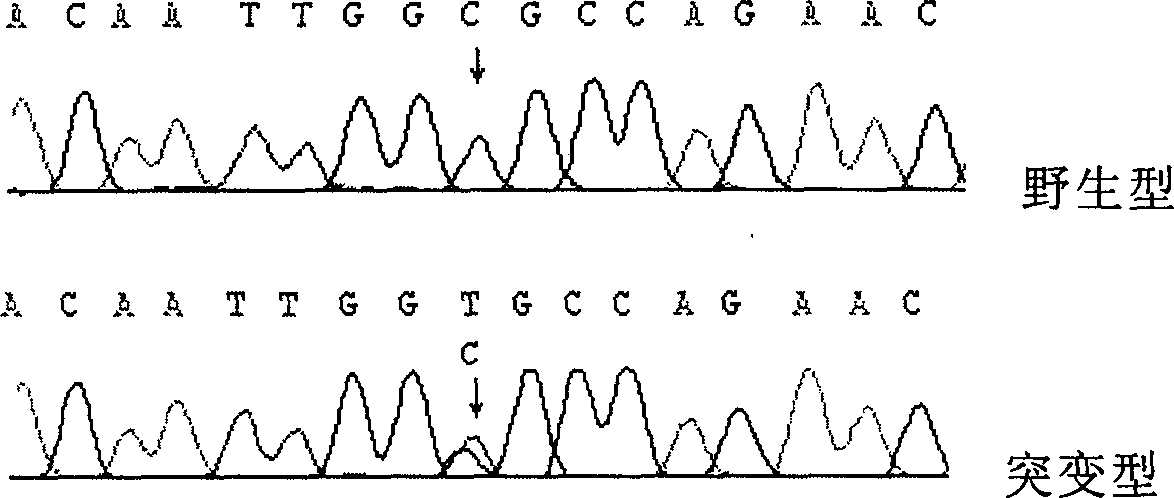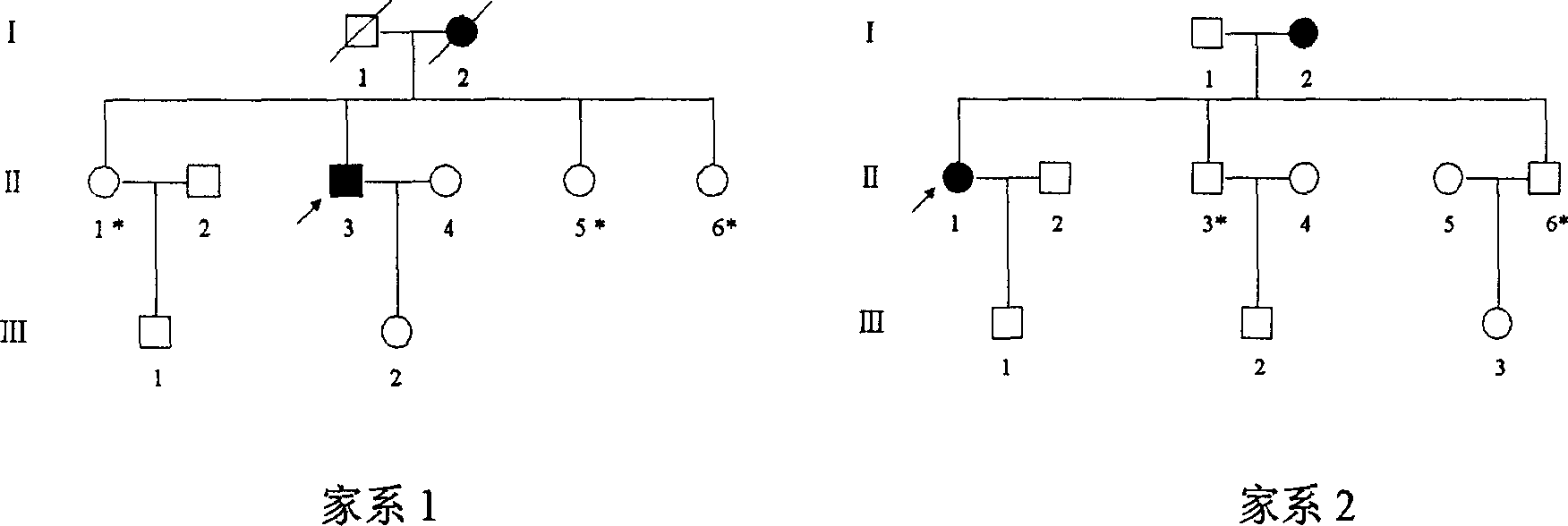Atrial fibrillation peccant gene and use thereof
A technology of amino acids and polynucleotides, applied in genetic engineering, plant genetic improvement, application, etc.
- Summary
- Abstract
- Description
- Claims
- Application Information
AI Technical Summary
Problems solved by technology
Method used
Image
Examples
Embodiment 1
[0103] Identification of YQXM
[0104] The strategy of identifying YQXM adopted in the present embodiment is: (1) studies have shown that the mechanism of occurrence of familial atrial fibrillation may be related to ion channels; Exon sequencing screening of candidate potassium channel genes (KCNQ1, HERG, KCNE1, KCNE2, KCNE3, KCNE4, KCNE5, and KCNJ2) to find possible pathogenic gene mutations; (3) Preliminary identification of YQXM mutations in two families After the relationship with atrial fibrillation, further rule out the possibility that more than a certain number of normal random individuals have the same gene mutation; (4) perform mutant function analysis with patch clamp, and finally establish that the YQXM or the encoded protein causes human atrial fibrillation.
[0105] In this embodiment, the steps for determining and identifying YQXM according to the above strategy are: (1) determining the candidate gene; (2) sequencing screening of the candidate gene; (3) excludin...
Embodiment 2
[0125] Establishment of Animal Model of Inherited Atrial Fibrillation
[0126] The human KCNE2 cDNA probe was used to scan the 129Sv mouse genome library, and the mouse genome KCNE2 gene was cloned. After confirmation by PCR, restriction analysis and shotgun sequencing, the fragments located upstream and downstream of KCNE2 in the mouse were selected and joined to the nucleotide sequence containing the nucleotide sequence shown in SEQ ID NO.1 and the neomycin resistance gene and TK gene, Specific homologous recombination at the mouse KCNE2 gene locus. Enabling transfected ES cells to undergo dual drug selection (G418 and Gancyclvir) narrows the scope for screening homologously recombined ES cell clones. The obtained ES cell clones were confirmed by PCR and Southern blot analysis to confirm their correct homologous recombination, and were injected into the blastocysts of C57BL / 6 strain mice after karyotype analysis, and then the injected blastocysts were implanted In utero of...
Embodiment 3
[0129] Preparation and purification of protein encoded by YQXM
[0130] In this example, the full-length YQXM sequence or fragment was constructed into a commercially available protein fusion expression vector, prokaryotically expressed in Escherichia coli in the form of a GST fusion protein, and the recombinant protein was purified.
[0131] (1) Construction of prokaryotic expression vector and transformation of Escherichia coli
[0132] According to the full-length coding sequence of the YQXM encoded protein (SEQ ID NO.1), primers were designed to amplify the complete coding reading frame (corresponding to about 20 or more nucleotides at the 5' and 3' ends of the coding sequence, respectively), and Restriction endonuclease sites were introduced into the anti-primers (this depends on the pGEX-2T vector selected), so as to construct the expression vector. Using the amplified product of YQXM obtained in Example 1 as a template, after PCR amplification, YQXM was cloned into the...
PUM
 Login to View More
Login to View More Abstract
Description
Claims
Application Information
 Login to View More
Login to View More - R&D
- Intellectual Property
- Life Sciences
- Materials
- Tech Scout
- Unparalleled Data Quality
- Higher Quality Content
- 60% Fewer Hallucinations
Browse by: Latest US Patents, China's latest patents, Technical Efficacy Thesaurus, Application Domain, Technology Topic, Popular Technical Reports.
© 2025 PatSnap. All rights reserved.Legal|Privacy policy|Modern Slavery Act Transparency Statement|Sitemap|About US| Contact US: help@patsnap.com


